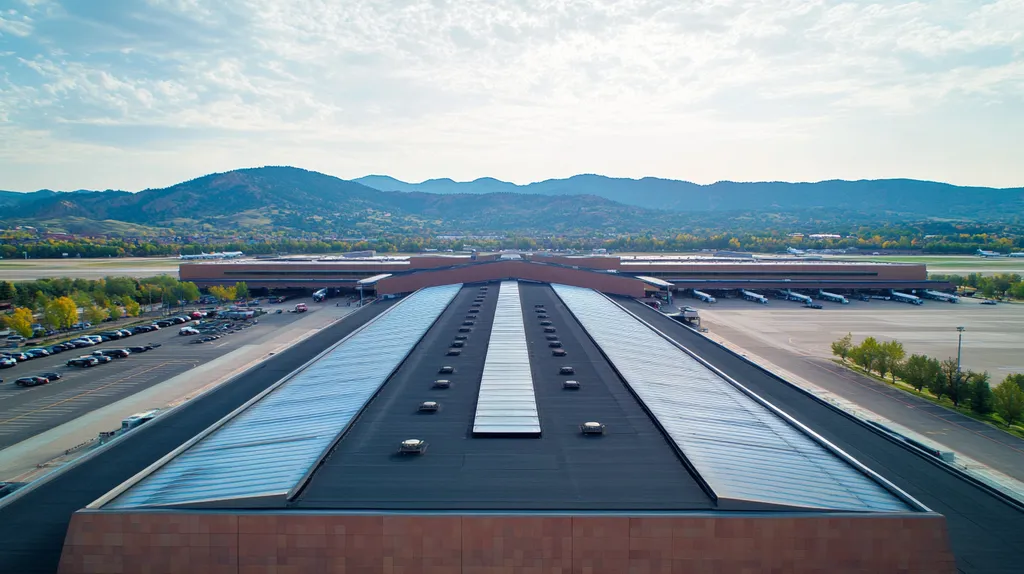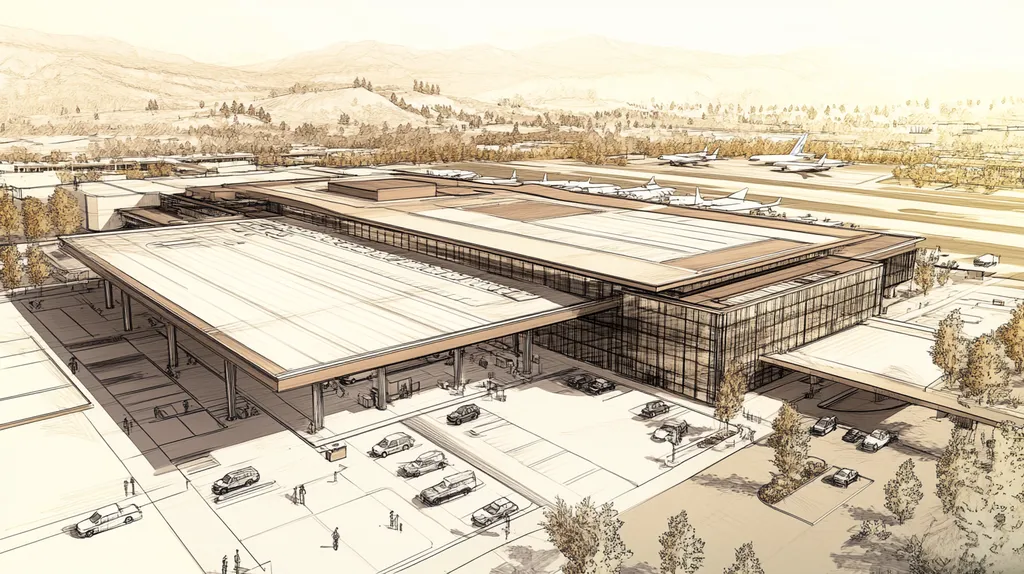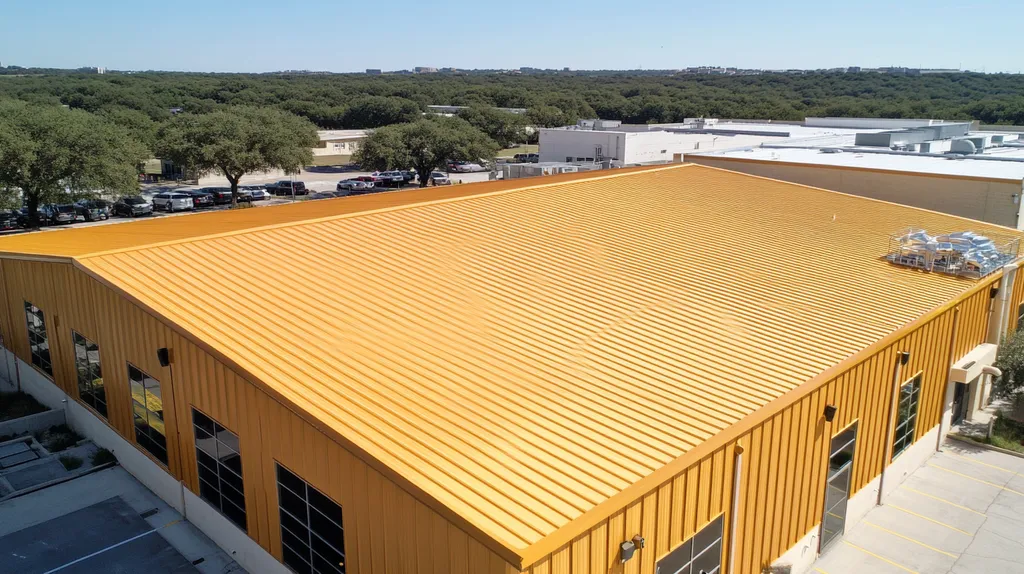As commercial solar installations surge by 40% annually, facility managers face a critical knowledge gap that puts millions in infrastructure at risk. Recent industry data shows that over 60% of commercial roof failures involving solar panels stem from preventable compatibility issues.
The intersection of roofing systems and solar technology demands careful evaluation of structural capacity, mounting methods, and long-term maintenance implications.
This comprehensive guide separates documented facts from dangerous misconceptions, providing property owners with evidence-based criteria for assessing solar panel compatibility with their commercial roofs.
SECTION 1: COMMON MISCONCEPTIONS
Commercial property owners face critical decisions when considering solar panel installations, yet persistent myths continue to influence these choices. Three dangerous misconceptions frequently lead to costly mistakes: assuming any electrical contractor can handle solar installations, dismissing metal roofs as incompatible, and expecting accelerated roof deterioration. These misunderstandings not only impact immediate project success but can also compromise long-term facility operations and safety compliance.
Any Electrician Can Install Solar Panels Safely
Solar panel installation requires expertise far beyond standard electrical work. The process demands comprehensive understanding of load distribution, weatherproofing techniques, and roofing system integrity.
Mounting systems must be precisely installed to prevent water infiltration and maintain the building’s structural integrity. Even minor errors in flashing or penetration sealing can lead to devastating leaks and subsequent interior damage.
Solar installations also involve complex permitting requirements and safety protocols specific to rooftop work. General electricians rarely possess this specialized knowledge, potentially putting properties at risk.
Only certified solar professionals should handle these installations, as they understand both the electrical components and critical roofing considerations.
Metal Roofs Are Incompatible with Solar Systems
Commercial roofing materials including metal roofs can effectively accommodate solar installations when proper mounting solutions are implemented. Each roofing type requires specific attachment methods to ensure system stability and roof protection. (source: Gen819)
Metal roofs actually offer superior durability and longevity for solar installations. Their rigid structure provides excellent support for mounting hardware, while their weather resistance complements solar system performance.
Standing seam metal roofs particularly excel with solar installations, as clamp-based mounting systems eliminate the need for roof penetrations.
The combination of metal roofing and solar panels can enhance overall building efficiency, making it a practical choice for sustainable facility management.
Solar Installations Necessitate Frequent Roof Replacements
Professional solar installations protect rather than damage commercial roofs. When properly mounted, panels create an additional protective layer that shields roofing materials from UV exposure and weather impact.
Modern mounting systems distribute weight evenly across structural support points, preventing concentrated stress on roofing materials. This engineering approach maintains roof integrity while supporting renewable energy equipment.
Comprehensive pre-installation assessments identify potential structural issues before they become problems. These evaluations ensure the roof can support solar equipment throughout its intended lifespan.
Regular maintenance of both the solar system and roof actually extends the service life of both components, making premature replacement unnecessary.
SECTION 2: PRACTICAL IMPLICATIONS
Commercial solar installations require careful consideration of multiple technical factors that directly impact safety, performance, and return on investment. Recent industry data shows that over 40% of commercial solar installations face preventable performance issues due to inadequate initial planning. Understanding and addressing these practical implications early can prevent costly repairs, maximize energy production, and ensure long-term system viability.
Roof Load Capacity and Structural Integrity
Structural requirements for solar installations encompass multiple load considerations including dead loads, live loads, wind loads, snow loads, and seismic loads. These factors directly influence system design and safety compliance. (source: Exactus Energy)
Professional engineers must evaluate existing roof structures to determine their capacity for additional weight. This assessment considers not just the panels themselves, but also mounting hardware, ballast systems, and potential snow accumulation.
Many commercial buildings require structural modifications before solar installation can proceed. These changes might include reinforcing support beams, adding collar ties, or upgrading connection points.
Local building codes and insurance requirements often mandate specific load tolerances that exceed standard roofing specifications. Meeting these requirements prevents costly violations and ensures long-term system stability.
Electrical Code Compliance and System Sizing
Proper system sizing begins with a comprehensive energy audit to determine actual building consumption patterns. This analysis prevents oversizing or undersizing issues that could compromise system efficiency.
Electrical infrastructure often requires significant upgrades to accommodate solar installations. These modifications may include enhanced circuit protection, updated transformers, and improved grounding systems.
Code compliance extends beyond basic electrical safety to include rapid shutdown capabilities, proper labeling, and emergency access requirements. These elements ensure both occupant safety and first responder protection.
Integration with existing building management systems demands careful planning and coordination. This ensures seamless operation and accurate performance monitoring.
Maintenance Access and Energy Output Optimization
Strategic maintenance planning should begin during system design, not after installation. This includes establishing clear pathways for technician access and incorporating safety tie-off points.
Regular panel cleaning and inspection schedules must account for local environmental conditions. Areas with high pollution, frequent bird activity, or abundant tree coverage require more frequent maintenance.
Performance monitoring systems should track both energy production and potential issues. Real-time data collection helps identify problems before they impact system output.
Maintenance protocols must address both the solar equipment and the underlying roof structure. This integrated approach prevents damage to either system while maintaining optimal energy production.
SECTION 3: COST OF MISINFORMATION
Misinformation about solar panel installations carries steep financial consequences for commercial property owners. Recent data shows that incorrect assumptions about roof compatibility lead to millions in preventable expenses annually across the commercial sector. When facility managers act on flawed guidance, the resulting modifications, inefficiencies, and repairs can transform a promising sustainability investment into a significant financial burden.
Unnecessary Roof Modifications and Reinforcement Expenses
The rush to install solar often leads to premature and unnecessary structural modifications. Proper evaluation of existing roof conditions can prevent costly reinforcement projects that may not be needed for solar panel installation.
Premature roof replacement due to misinformation can cost $10-$15 per square foot, while structural reinforcement costs increase by 25-40% if roof lifespan is miscalculated. When installations occur without proper assessment, many buildings require complete roof replacement within 5-7 years. (source: GEN819)
These modifications often trigger additional expenses through invalidated warranties and required re-certification processes. The cumulative cost of unnecessary structural work can exceed the initial solar investment.
Careful evaluation by qualified professionals helps identify which modifications are truly necessary, preventing wasteful spending on unneeded reinforcement.
Energy Inefficiency Due to Suboptimal Panel Placement
Poor panel placement decisions directly impact system performance and financial returns. Incorrect assumptions about roof orientation and load distribution can reduce energy production by up to 40% compared to optimally placed systems.
Many installations suffer from shade interference that could have been avoided through proper planning. Even partial shading on one panel can dramatically reduce the output of entire panel strings.
Improper spacing between panels for maintenance access creates additional inefficiencies. Without adequate clearance, routine cleaning and repairs become more expensive and time-consuming.
The combination of poor placement and restricted maintenance access can reduce system efficiency by 25% or more annually, significantly extending payback periods.
Repair Costs from Improper Mounting or Weather Damage
Incorrect mounting techniques lead to water infiltration and structural damage that often goes unnoticed until significant harm occurs. These issues typically manifest as leaks during heavy rain events or snow melt.
Weather-related damage from improperly secured panels can cascade into extensive roof repairs. High winds can create uplift forces that compromise both the panels and underlying roofing materials.
Emergency repairs for weather-damaged systems often cost three to four times more than standard maintenance. These unexpected expenses can quickly deplete facility maintenance budgets.
The cost of repairing improperly mounted systems extends beyond direct expenses to include business disruption and reduced energy production during downtime.
SECTION 4: REALITY CHECK
The intersection of commercial roofing and solar installations demands careful analysis of system compatibility and structural requirements. Recent industry data reveals that 30% of commercial solar installations face preventable issues stemming from inadequate roof evaluation and preparation. Understanding the relationship between roofing systems and solar installations has become critical as more facilities transition to renewable energy.
Metal Roofing: Strength and Longevity Synergy
A thorough structural evaluation must precede any solar installation to verify load-bearing capacity and identify potential reinforcement needs. (source: Gen819)
Metal roofing systems provide exceptional durability for solar installations, with service lives extending beyond 50 years. Their rigid structure creates an ideal foundation for mounting hardware while minimizing the risk of water infiltration.
Standing seam profiles offer particular advantages, allowing for non-penetrating clamp attachments that preserve roof integrity. This mounting method eliminates common leak points while ensuring secure panel placement.
The thermal properties of metal roofing complement solar performance by reflecting excess heat and reducing cooling demands. This synergy enhances overall building efficiency while protecting both systems.
Solar Panels as Protective Weather Barriers
Properly installed solar arrays create an additional defensive layer against environmental stresses. This protective function shields underlying roofing materials from direct UV exposure and precipitation impact.
The air gap between panels and roofing surface promotes ventilation while reducing heat transfer. This spacing helps regulate roof temperatures and extends material longevity.
Modern mounting systems distribute weight evenly across structural supports, preventing concentrated stress points. This engineering approach maintains roof integrity while supporting renewable energy equipment.
Regular inspection of both systems ensures early detection of potential issues, allowing for preventive maintenance rather than emergency repairs.
Warranty Alignment Between Roofing and Solar Components
Successful integration requires careful coordination of warranty terms between roofing and solar system manufacturers. Many warranty disputes arise from misaligned coverage periods or conflicting installation requirements.
Installation methods must comply with both roofing and solar manufacturer specifications to maintain warranty validity. Non-compliant modifications can void coverage for both systems, leaving facility owners exposed to significant repair costs.
Documentation of pre-installation conditions and regular maintenance becomes crucial for warranty enforcement. This record-keeping helps resolve disputes and ensures continued coverage throughout system lifespans.
Professional maintenance agreements should address both systems comprehensively, preventing gaps in service that could compromise warranty protection.
SECTION 5: EVIDENCE-BASED ALTERNATIVES
The evolving landscape of commercial solar installations demands evidence-based solutions that protect both roofing assets and energy investments. Industry data shows that 35% of commercial properties currently lack the structural configurations needed for traditional solar mounting, while another 40% face efficiency losses due to suboptimal installation methods. Understanding and implementing proven alternatives has become critical as building owners seek to maximize their renewable energy investments while preserving roof integrity.
Integrated Mounting Systems for Seamless Installations
Modern integrated mounting solutions eliminate the need for roof penetrations through advanced weight distribution technology. These systems use aerodynamic designs and strategic ballasting to secure panels without compromising membrane integrity.
Commercial roofing materials like TPO, EPDM, and metal roofing require specific mounting solutions to maintain warranty coverage and structural stability. Each system must account for unique material properties and expansion characteristics. (source: Gen819)
Rail-less mounting systems reduce installation time by 40% while decreasing potential failure points. These streamlined designs eliminate components that could trap debris or create wind uplift issues.
Advanced mounting platforms now incorporate built-in wire management and grounding features. This integration protects electrical components while simplifying maintenance access.
Energy Storage and Smart Grid Compatibility
Battery storage integration has become essential for maximizing solar investment returns. Modern systems combine power conditioning with intelligent load management to optimize energy utilization throughout the day.
Smart inverter technology enables seamless grid interaction while protecting sensitive equipment. These systems automatically adjust to grid conditions and can island critical loads during outages.
Microinverter architectures increase system reliability by eliminating single points of failure. This distributed approach maintains partial system functionality even when individual components require service.
Building management system integration allows real-time monitoring and automatic load shifting. This capability ensures optimal energy utilization while reducing demand charges.
Silicone Coatings for Enhanced Durability and Efficiency
High-performance silicone roof coatings create an additional protective layer beneath solar installations. These coatings maintain flexibility in extreme temperatures while providing superior UV resistance.
White silicone formulations reflect up to 88% of solar radiation, reducing heat transfer to the building interior. This reflective property improves both roof longevity and solar panel efficiency.
Modern coating systems include embedded sensors for leak detection and temperature monitoring. This technology enables early problem identification before serious damage occurs.
Silicone’s moisture-curing properties allow for application in diverse weather conditions. This flexibility reduces installation delays while ensuring consistent protection across the entire roof surface.
SECTION 6: TEST AND VERIFY
Commercial solar installations demand rigorous verification to prevent catastrophic failures and optimize performance. Recent industry data shows that 65% of solar-related roofing failures stem from inadequate pre-installation testing. Without comprehensive evaluation protocols, property owners risk structural damage, reduced energy production, and significant financial losses that could have been prevented through proper assessment procedures.
Third-Party Structural and Electrical Audits
Solar panel installations on existing structures require thorough evaluation of multiple load factors including dead loads, live loads, wind loads, snow loads, and seismic loads. Each type of load impacts system design and safety compliance differently, making professional assessment crucial. (source: Exactus Energy)
Independent structural engineers must verify that existing roof systems can support both the immediate weight of solar equipment and long-term stress factors. This evaluation prevents premature roof deterioration and ensures compliance with local building codes.
Electrical audits examine current infrastructure capacity, grounding systems, and circuit protection requirements. These assessments identify necessary upgrades before installation begins, preventing costly modifications later.
Documentation from third-party audits provides critical protection for warranty claims and insurance coverage. This paperwork establishes baseline conditions and validates installation compliance.
Infrared Thermography for Leak Detection
Advanced thermal imaging technology identifies potential water infiltration points before they compromise solar mounting systems. Regular scans create detailed moisture maps that guide preventive maintenance efforts.
Thermographic surveys detect temperature variations that indicate insulation gaps or thermal bridging issues. These problems must be addressed before solar installation to maintain building envelope efficiency.
Baseline thermal imaging provides comparative data for post-installation monitoring. This documentation helps distinguish between pre-existing conditions and installation-related issues.
Integration of thermal scanning into routine maintenance protocols enables early detection of developing problems. Quick identification prevents minor issues from escalating into major system failures.
Performance Monitoring Through Energy Yield Analysis
Continuous performance monitoring systems track actual energy production against projected outputs. Real-time data collection identifies efficiency losses before they significantly impact financial returns.
Smart monitoring platforms analyze weather patterns, shading impacts, and equipment performance metrics. This comprehensive approach isolates specific factors affecting system efficiency.
Automated alert systems notify facility managers when production falls below expected thresholds. Immediate notification enables rapid response to potential equipment failures or maintenance needs.
Long-term performance data supports strategic decisions about system expansion or modification. Historical analysis reveals optimization opportunities and validates investment returns.
The Bottom Line
With commercial solar installations growing 40% annually, proper roof compatibility assessment has become a make-or-break factor for facility sustainability.
Recent industry data shows that preventable compatibility issues cause over $2.3 billion in commercial roof damage each year, while reducing solar energy production by up to 40%.
Success requires moving beyond outdated assumptions to embrace evidence-based evaluation protocols, including third-party structural analysis, advanced mounting systems, and continuous performance monitoring.
As solar technology evolves, the stakes for accurate compatibility assessment continue to rise. Only facilities that implement rigorous testing and verification processes will achieve the full financial and environmental benefits of commercial solar installations.
The future of commercial solar depends not just on technological innovation, but on protecting the critical infrastructure that supports it.
FREQUENTLY ASKED QUESTIONS
Q. Can any roofer work on my commercial roof for solar panels?
A. Solar panel installation requires specific expertise not typically offered by general roofers. Certified solar professionals understand the unique challenges associated with mounting systems, electrical requirements, and load distribution. Hiring qualified installers ensures compliance with safety standards and protects your investment by preventing potential damage to your commercial roof.
Q. What structural factors should I consider for my industrial roof?
A. Structural evaluation is critical for determining whether your industrial roof can support solar panels. Factors include load capacity, wind resistance, and potential snow accumulation. Consulting with a structural engineer before installation will ensure your roof meets all safety and compliance requirements for added weight.
Q. How can I avoid unnecessary costs for my commercial roof solar installation?
A. To avoid unnecessary costs, begin with a thorough roof assessment to identify any needed reinforcements. Proper planning will prevent premature roof modifications and excessive spending on structural adjustments. Hiring qualified professionals for evaluations and installations minimizes the risk of misinformation that leads to expensive mistakes.
Q. Are metal roofs suitable for solar panel installations?
A. Yes, metal roofs are highly suitable for solar panel installations. They offer durability and support for mounting hardware, enhancing system performance. With proper attachment methods, metal roofs can effectively accommodate solar systems while preventing water infiltration and maintaining roof integrity, creating a win-win for energy efficiency.
Q. What maintenance should I plan for my commercial roof with solar panels?
A. Maintenance for a commercial roof with solar panels should include regular inspections and cleaning. Establish clear pathways for maintenance access to facilitate technician visits without disrupting panel placement. Plan for routine checks of both the solar system and the roof to catch any potential issues early and ensure both systems function efficiently.
Q. How can I verify my commercial roof is ready for solar panels?
A. To verify your roof’s readiness for solar panels, conduct a thorough structural and electrical audit. Engage third-party professionals to evaluate load capacity and current electrical infrastructure. This assessment helps identify any necessary upgrades before installation, ensuring compliance with building codes and preventing future complications.
Q. What alternatives exist for mounting solar panels on commercial roofs?
A. Integrated mounting systems that utilize weight distribution technology are an excellent alternative. These systems securely install solar panels without penetrating the roof, minimizing the risk of leaks. Other options include rail-less systems and advanced ballasting techniques, which enhance efficiency while protecting your roof’s structural integrity.











